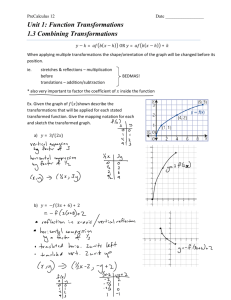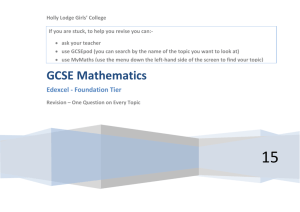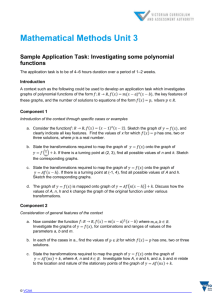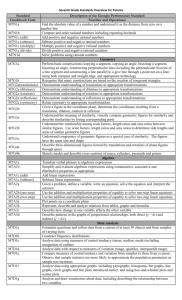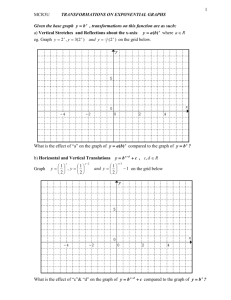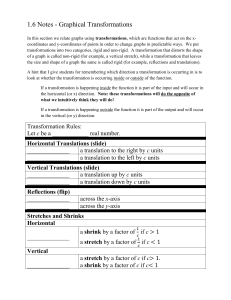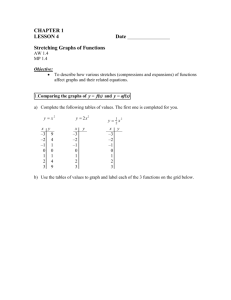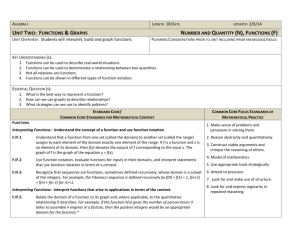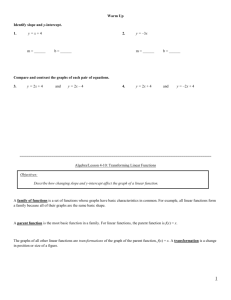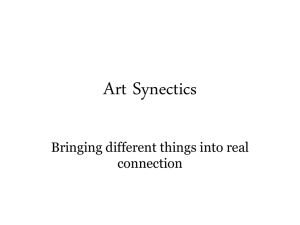Precalculus 1 - Mercer Island School District
advertisement
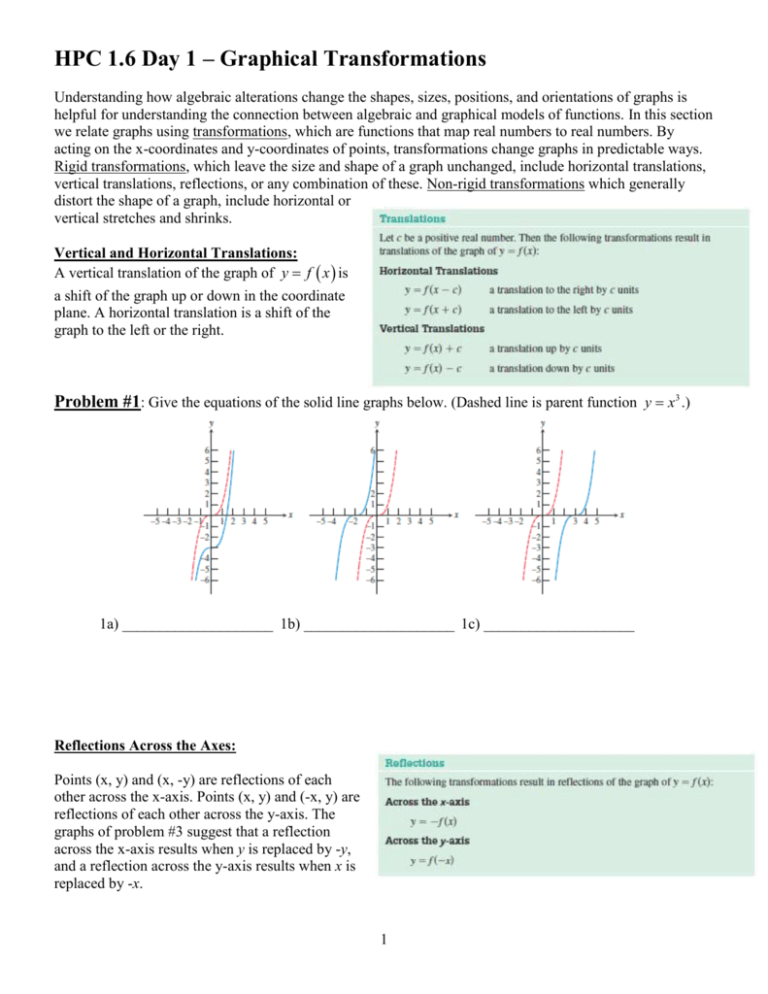
HPC 1.6 Day 1 – Graphical Transformations Understanding how algebraic alterations change the shapes, sizes, positions, and orientations of graphs is helpful for understanding the connection between algebraic and graphical models of functions. In this section we relate graphs using transformations, which are functions that map real numbers to real numbers. By acting on the x-coordinates and y-coordinates of points, transformations change graphs in predictable ways. Rigid transformations, which leave the size and shape of a graph unchanged, include horizontal translations, vertical translations, reflections, or any combination of these. Non-rigid transformations which generally distort the shape of a graph, include horizontal or vertical stretches and shrinks. Vertical and Horizontal Translations: A vertical translation of the graph of y f x is a shift of the graph up or down in the coordinate plane. A horizontal translation is a shift of the graph to the left or the right. Problem #1: Give the equations of the solid line graphs below. (Dashed line is parent function y x3 .) 1a) ____________________ 1b) ____________________ 1c) ____________________ Reflections Across the Axes: Points (x, y) and (x, -y) are reflections of each other across the x-axis. Points (x, y) and (-x, y) are reflections of each other across the y-axis. The graphs of problem #3 suggest that a reflection across the x-axis results when y is replaced by -y, and a reflection across the y-axis results when x is replaced by -x. 1 Problem #2: Accurately sketch the following graphs on the coordinate planes below without a calculator. f x x g x x h x x Which axis are g(x) and h(x) reflected across? _______________________________________________ Vertical Stretches and Shrinks We now investigate what happens when we multiply all the y-coordinates of a graph by a fixed real number. (Note: We won’t consider horizontal stretches & shrinks until we work with transformations of trigonometry functions.) Problem #4: Accurately sketch the following graphs on the coordinate planes below without a calculator. f x 2x g x 3 2x h x 2 1 x 2 4 Function Notation: We use function notation to note a transformation of another “parent function.” (Often the parent function will be one of the 12 basic functions.) The grid on the next page will help illustrate this notation. Parent Function Transformation(s) f x 1 up 3 to the right f x x Function Notation g x f x 3 1 1 1 e x Equation of Transformed Function y y x 3 1 Point Rule P ( x, y ) ( x 3, y 1) 1 2 1 e ( x 5) y x 7 3 2 f x x reflection over y-axis 4 to the left y 2x2 3 y x 2 3 3 f x g x f x 3 5 1 x g x f x 3 7 f x x f x ln x f x sin x vertical scaling by factor of 3 4 up g x 3 f x 3 7 Problem #5: Now rewrite the functions you graphed on the prior pages in function notation… Order of Transformations: When a function has multiple transformations from a parent function, there are different orders that the transformations can be applied. There are multiple approaches that will yield accurate results, and some approaches which yield inaccurate results. In this class we will use the following priority when applying transformations: 1. Apply reflections 2. Apply stretches & shrinks 3. Apply translations (vertical & horizontal “shifts”) You can transform any point of the parent function following the above prioritization and find its transformed point. Typically we will only transform three-five (3-5) key points and then sketch the graph based on our understanding of the original graph and the transformations applied. 3
